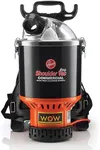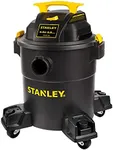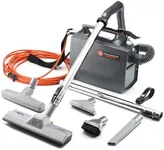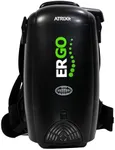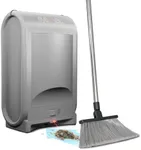Buying Guide for the Best Industrial Commercial Vacuums
Choosing the right industrial-commercial vacuum can significantly impact the efficiency and cleanliness of your workspace. These vacuums are designed to handle heavy-duty cleaning tasks in various environments such as warehouses, factories, and large commercial spaces. To make an informed decision, it's essential to understand the key specifications and how they align with your specific needs. Here are the main factors to consider when selecting an industrial-commercial vacuum.Power and SuctionPower and suction are critical for determining how effectively the vacuum can pick up debris and dust. This is usually measured in watts or horsepower. Higher power and suction levels are suitable for heavy-duty tasks and large debris, while lower levels may suffice for lighter, everyday cleaning. Consider the type of debris and the frequency of cleaning when choosing the right power level.
CapacityThe capacity of the vacuum refers to the size of the dustbin or bag and determines how much debris it can hold before needing to be emptied. Larger capacities are ideal for extensive areas and heavy use, reducing the frequency of emptying. Smaller capacities might be more manageable and sufficient for smaller spaces or less frequent use. Assess the size of the area and the volume of debris typically encountered to decide on the appropriate capacity.
Filtration SystemA good filtration system is essential for maintaining air quality and ensuring that fine dust and allergens are captured. HEPA filters are highly effective and recommended for environments where air quality is a concern. Standard filters may be adequate for less sensitive areas. Consider the specific needs of your environment, especially if there are health regulations or concerns about air quality.
Durability and Build QualityIndustrial-commercial vacuums need to withstand rigorous use, so durability and build quality are crucial. Look for models made from robust materials like stainless steel or heavy-duty plastic. Check for features like reinforced hoses and sturdy wheels. If the vacuum will be used in harsh environments or for extended periods, prioritize models known for their durability.
Mobility and Ease of UseMobility and ease of use are important for ensuring that the vacuum can be easily maneuvered around the workspace. Consider the weight, wheel design, and handle ergonomics. Lighter models with swivel wheels and comfortable handles are easier to move, especially in tight spaces. If the vacuum needs to be transported frequently or used in various locations, these features become even more critical.
Noise LevelThe noise level of the vacuum can impact the working environment, especially in settings where noise can be disruptive. Noise levels are measured in decibels (dB). Quieter models are preferable for environments where maintaining a low noise level is important, such as offices or during business hours. For industrial settings where noise is less of a concern, higher noise levels might be acceptable.
Attachments and AccessoriesAttachments and accessories can enhance the versatility of the vacuum, allowing it to handle a variety of cleaning tasks. Common attachments include crevice tools, brushes, and extension wands. Consider the specific cleaning needs of your environment and choose a vacuum that comes with or is compatible with the necessary accessories. This can make the vacuum more effective and efficient for different types of cleaning.
